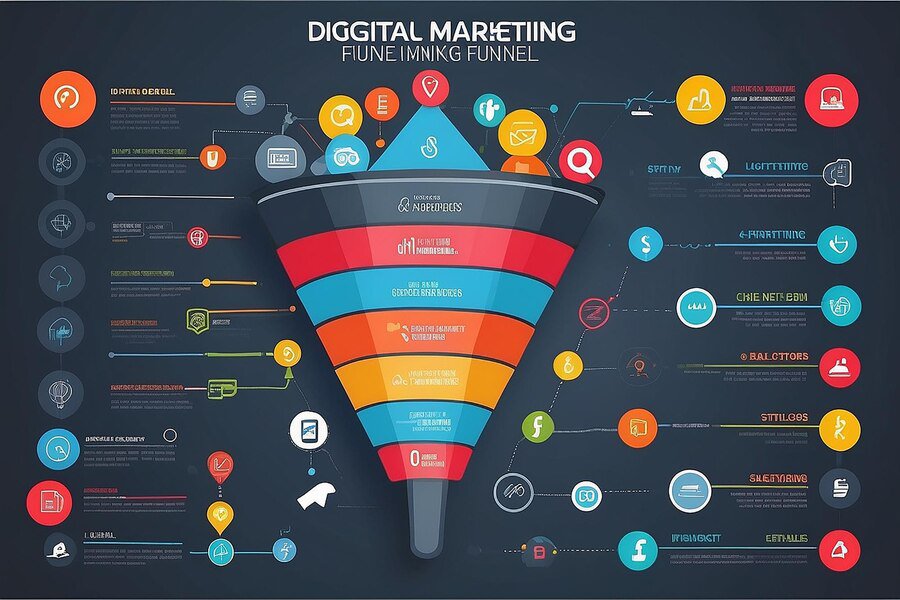Understanding HTML5 and Its Impact on Modern Web Development
In the realm of modern web development, HTML5 stands as a cornerstone, reshaping the digital landscape with its dynamic capabilities and enhanced functionalities. As the fifth iteration of Hypertext Markup Language, HTML5 has revolutionized the way websites are built and experienced, fostering a more interactive, visually compelling, and accessible online environment. Its advent marked a significant departure from its predecessors, introducing a plethora of new semantic elements, multimedia support, and advanced scripting features that empower developers to craft richer, more immersive web experiences. With its seamless integration of multimedia elements such as audio, video, and canvas, HTML5 has transcended the confines of static web pages, enabling the creation of dynamic, responsive content that adapts fluidly across various devices and screen sizes. Moreover, its robust support for offline storage, geolocation, and drag-and-drop functionality has propelled web applications to new heights of interactivity and user engagement. As we delve deeper into the intricacies of HTML5 and its myriad applications, it becomes evident that its impact on modern web development is not merely evolutionary but transformative, paving the way for a more interconnected, immersive, and user-centric digital future.
The Evolution of HTML: Tracing HTML5's Origins and Development
HTML5 represents a significant milestone in the evolution of web technology, building upon its predecessors while introducing new features and functionalities. Born out of the necessity to meet the demands of modern web applications, HTML5 emerged as a collaborative effort among various stakeholders within the web community. Its development involved extensive discussions, debates, and iterations to address the shortcomings of previous HTML versions and adapt to the changing landscape of the internet. From the initial proposals to the final specifications, HTML5 underwent a rigorous standardization process overseen by the World Wide Web Consortium (W3C) and the Web Hypertext Application Technology Working Group (WHATWG). This evolutionary journey reflects the dynamic nature of web
development and the ongoing quest for innovation to deliver richer, more immersive online experiences.

Key Features of HTML5: Enhancing Web Development Capabilities
HTML5 introduces a plethora of features and APIs that significantly enhance the capabilities of web development. One of its key features is the native support for multimedia elements such as <video> and <audio>, enabling seamless integration of rich media content without relying on third-party plugins like Flash. Additionally, HTML5 introduces semantic elements like <header>, <footer>, <nav>, and <article>, providing a more structured and meaningful way to organize web content. The canvas element allows for dynamic rendering of graphics and animations directly within the browser, opening up possibilities for interactive web applications and games. Furthermore, HTML5 offers enhanced forms with new input types, form validation, and the ability to store data locally, improving user experience and usability. These features collectively empower developers to create more engaging, responsive, and feature-rich web applications that meet the evolving demands of modern users.
Responsive Design and Multimedia Integration in HTML5
HTML5 plays a crucial role in facilitating responsive design and seamless multimedia integration, two cornerstones of modern web development. With its native support for responsive features like flexible grid layouts, media queries, and scalable vector graphics (SVG), HTML5 empowers developers to create websites and applications that adapt seamlessly to various screen sizes and devices. This responsiveness is essential in today's multi-device landscape, where users expect consistent experiences across desktops, tablets, and smartphones. Additionally, HTML5's support for multimedia elements such as <video> and <audio> enables developers to embed rich media content directly into web pages without relying on external plugins or frameworks. This not only enhances user engagement but also improves accessibility and performance by reducing the reliance on third-party resources.
Accessibility and SEO Advancements with HTML5
HTML5 brings significant advancements in accessibility and search engine optimization (SEO), ensuring that web content is not only accessible to all users but also more discoverable by search engines. Semantic elements introduced in HTML5, such as <header>, <footer>, <nav>, and <article>, provide a clearer structure and meaning to web documents, making it easier for assistive technologies like screen readers to interpret and navigate content. Additionally, HTML5's native form validation features help ensure that web forms are more accessible and usable for users with disabilities. From an SEO perspective, HTML5's semantic markup enhances the understanding of web content by search engine crawlers, leading to better indexing and ranking of pages. Furthermore, HTML5's support for responsive design and mobile-friendly features align with search engine algorithms that prioritize mobile-first indexing, contributing to improved search visibility and user experience.
Cross-Platform Compatibility: HTML5's Influence on Mobile Development
HTML5 has revolutionized mobile development by offering a platform-independent solution that enables developers to create cross-platform applications that run seamlessly on various devices and operating systems. With HTML5, developers can leverage web technologies like HTML, CSS, and JavaScript to build mobile applications that can be accessed through web browsers, eliminating the need for platform-specific development and distribution channels. This approach significantly reduces development time and costs while ensuring broader reach and compatibility across different devices and platforms. Furthermore, HTML5's support for responsive design enables mobile applications to adapt fluidly to different screen sizes and orientations, providing a consistent user experience across smartphones, tablets, and other mobile devices. By embracing HTML5, developers can unlock the potential of mobile web development, catering to the diverse needs of modern users in an increasingly mobile-centric world.

Harnessing the Power of APIs in HTML5 for Dynamic Web Applications
HTML5 brings with it a vast array of Application Programming Interfaces (APIs) that empower developers to create dynamic and interactive web applications. These APIs offer functionalities ranging from multimedia manipulation to real-time communication, enabling developers to push the boundaries of what's possible on the web.
- Geolocation API: Allows web applications to access the user's geographical location, opening doors for location-based services and personalized experiences.
- Web Storage API: Provides a way for web applications to store data locally on the user's device, improving performance and enabling offline functionality.
- WebRTC API: Facilitates real-time communication between browsers, enabling features like video conferencing, file sharing, and online gaming.
- Web Audio API: Enables advanced audio processing and manipulation within the browser, empowering developers to create immersive audio experiences for their applications.
- Fetch API: Offers a modern, promise-based interface for making HTTP requests, simplifying data retrieval and manipulation in web applications.
By harnessing the power of these APIs and integrating them into their web applications, developers can create highly engaging, dynamic, and feature-rich experiences that rival traditional desktop applications in terms of functionality and performance.
Future Trends: Exploring HTML5's Continued Impact on Web Development
As technology continues to evolve, HTML5 remains at the forefront of web development, driving innovation and shaping the future of the internet. Looking ahead, several trends are poised to further elevate HTML5's influence on web development, revolutionizing the way we interact with online content.
- Progressive Web Apps (PWAs): With HTML5's support for offline functionality, responsive design, and push notifications, PWAs are set to become the standard for delivering app-like experiences on the web.
- WebAssembly (Wasm): By enabling high-performance, low-level programming languages like C and C++ to run in web browsers, WebAssembly will unlock new possibilities for performance-intensive web applications and games.
- Augmented Reality (AR) and Virtual Reality (VR): HTML5's support for multimedia and 3D graphics, combined with emerging APIs like WebXR, will drive the proliferation of immersive AR and VR experiences directly within web browsers.
- Web Components: HTML5's native support for custom elements and shadow DOM will facilitate the widespread adoption of reusable, encapsulated UI components, streamlining development workflows and promoting code reusability.
- Enhanced Security and Privacy: HTML5's ongoing development will prioritize security and privacy features, such as Content Security Policy (CSP) and SameSite cookies, to mitigate security risks and protect user data in an increasingly connected world.
As HTML5 continues to evolve and adapt to the changing demands of the web, it will remain a cornerstone of web development, enabling developers to create innovative, accessible, and secure experiences that push the boundaries of what's possible on the internet.
Conclusion
Delving into the realm of HTML5 reveals its pivotal role in shaping the landscape of modern web development. From its enhanced multimedia capabilities to its streamlined structure, HTML5 stands as a cornerstone technology propelling digital innovation forward. Its compatibility across various devices and browsers fosters accessibility, while its robust features empower developers to craft dynamic and immersive web experiences. As we navigate the ever-evolving digital sphere, understanding HTML5 is not merely advantageous but essential for businesses aiming to stay competitive in the online arena.
For further inquiries or to explore how HTML5 can revolutionize your online presence, feel free to reach out to Ideation Digital Marketing. Located in Charleston, WV, our team is dedicated to leveraging cutting-edge technologies like HTML5 to elevate your brand's digital footprint. Contact us at (304) 814-2445 and embark on a journey towards digital excellence today.












